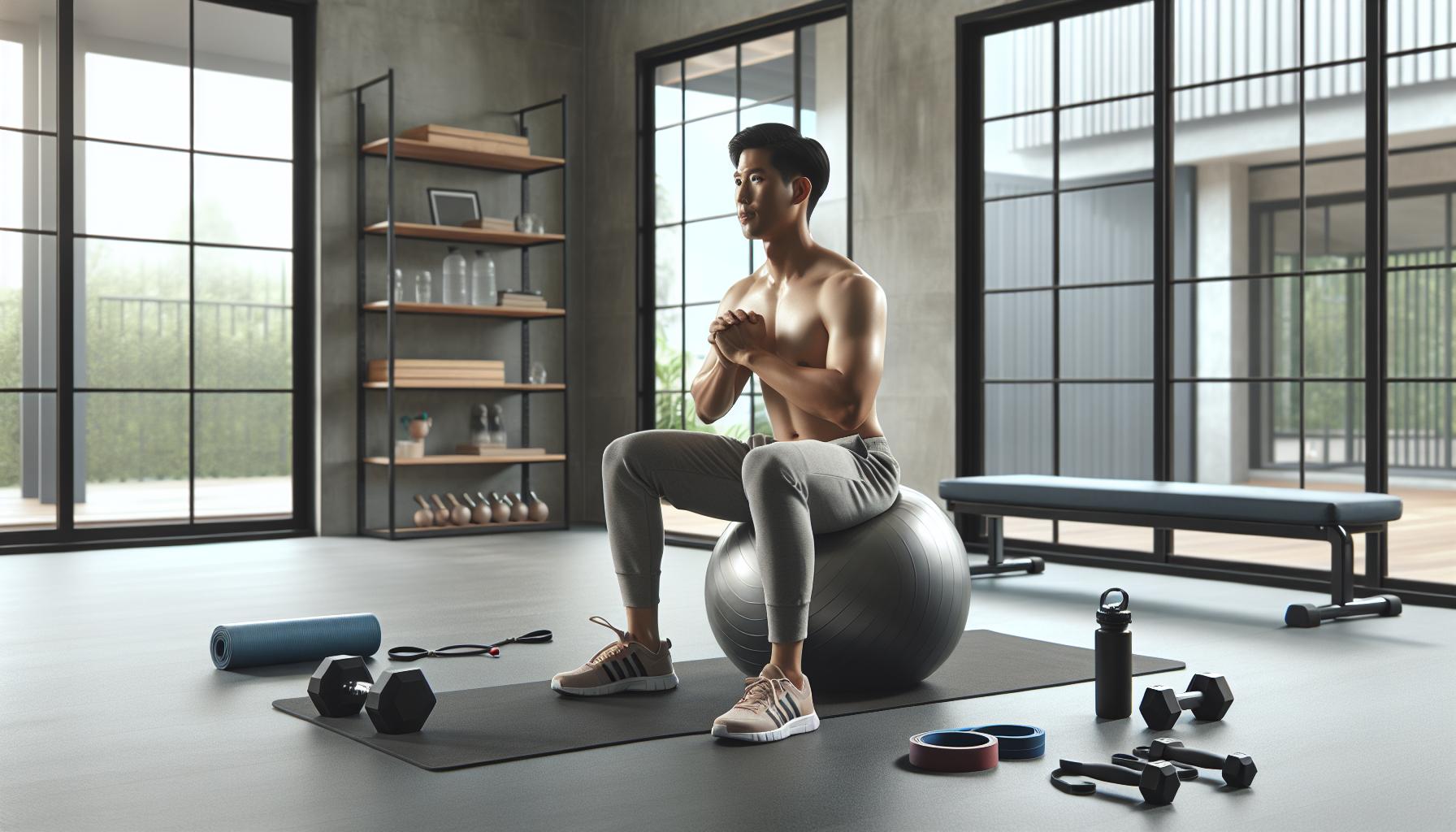Imagine turning your mundane workout routine into a fun-filled adventure. An exercise ball can do just that! This versatile piece of equipment isn’t just for gym enthusiasts; it’s for anyone looking to spice up their fitness game. Whether you want to strengthen your core or add a little bounce to your daily stretches, the exercise ball is your new best friend.
How to Use an Exercise Ball
Using an exercise ball offers a range of benefits that enhance fitness levels and overall well-being. These advantages are suitable for various individuals, from beginners to seasoned athletes.
Improves Core Strength
Core strength significantly improves when using an exercise ball. Sitting or performing exercises on the unstable surface engages core muscles, including the abdominals, obliques, and lower back. Engaging these muscles provides better support for the spine. Stronger core muscles contribute to improved posture, which helps in daily activities and athletic performance. As a result, regular usage leads to noticeable strength gains over time.
Enhances Stability and Balance
Enhancing stability and balance occurs naturally when incorporating an exercise ball into workouts. The ball’s instability forces the body to activate stabilizing muscles, leading to improved coordination and balance. Individuals engaged in exercises like squats or push-ups on the ball develop greater overall stability. Enhanced balance translates to better athletic performance and reduced risk of falls or injuries. Integrating an exercise ball into routines fosters a more dynamic and comprehensive fitness approach.
Choosing The Right Exercise Ball

Selecting the appropriate exercise ball enhances workouts and maximizes benefits. Factors like size and material quality play crucial roles in choosing the right ball.
Size Considerations
Size greatly impacts comfort and effectiveness. Exercise balls typically come in three standard diameters: 55 cm, 65 cm, and 75 cm. Individuals under 5’2″ benefit from a 55 cm ball, while those between 5’2″ and 5’8″ find success with a 65 cm ball. Taller individuals above 5’8″ should use a 75 cm ball. Proper sizing ensures that legs maintain a 90-degree angle while seated, allowing for optimal balance and posture.
Material Quality
Material quality significantly affects durability and performance. High-quality exercise balls use thick, burst-resistant PVC that withstands regular use. Balls made from softer materials may feel comfortable but might wear out quickly. Opting for a textured surface enhances grip and prevents slipping during workouts. Checking for certifications or ratings also indicates safety and reliability. Always assess the impact of the ball’s material on performance to ensure maximum benefits during exercise.
How To Use An Exercise Ball Effectively
Using an exercise ball can significantly enhance workout routines. Adopting proper techniques allows individuals to maximize benefits and safety.
Basic Exercises
Sit-ups and crunches on the ball engage core muscles effectively. Positioning oneself with the lower back on the ball provides support while exercising. Individuals can also practice balance by sitting upright and engaging the core. Stability can be improved through simple exercises like wall squats while holding the ball against the wall. Planks performed with forearms on the ball increase core engagement. Lastly, gentle stretches such as torso rotations enhance flexibility and mobility.
Advanced Movements
Incorporating dynamic movements raises challenges and boosts fitness levels. For example, push-ups performed with hands on the ball demand more stability and strength. Individual variations can be added, such as single-leg balances to target coordination. Medicine ball throws while seated on the exercise ball improve power and balance. Additionally, incorporating lunges while balancing on the ball can forge balance and strength. Engaging in these advanced movements aids in muscle gains while keeping workouts interesting and varied.
Safety Tips When Using An Exercise Ball

Prioritizing safety enhances the experience of using an exercise ball. Understanding key tips ensures effective workouts without unnecessary risks.
Proper Inflation
Correct inflation is essential for optimal performance. An exercise ball inflated too much becomes unstable, while insufficient inflation hinders effectiveness. The ball should maintain a firmness that allows slight deflation when weight is applied. Checking the manufacturer’s guidelines provides insight into appropriate inflation levels. Using a pressure gauge can help achieve the correct firmness, ensuring stability during workouts.
Avoiding Common Injuries
Minimizing the risk of injuries starts with proper technique. Maintaining a strong core keeps the body balanced on the ball. Ensuring the space around the exercise ball remains clear prevents accidents. Wearing appropriate footwear, such as supportive shoes, enhances grip and stability during exercises. If pain or discomfort arises, stopping the activity immediately prevents further strain. Staying aware of body positioning during workouts reinforces safety and effectiveness.
Elevate any Fitness Routine
Using an exercise ball can elevate any fitness routine by adding variety and challenge. It not only strengthens core muscles but also improves balance and stability. By choosing the right size and ensuring proper inflation, individuals can maximize their workout effectiveness while minimizing injury risks.
Incorporating both basic and advanced exercises keeps sessions engaging and dynamic. With a focus on safety and technique, the exercise ball becomes a valuable tool in achieving fitness goals. Embracing this versatile equipment can lead to noticeable improvements in strength and overall well-being.



